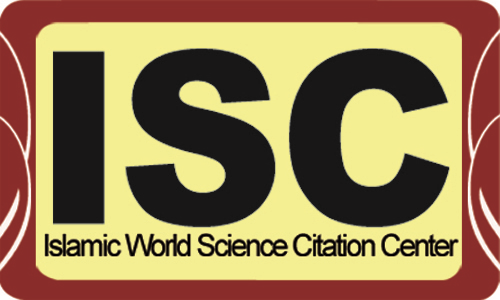Adsorptive removal of Cr (vi) onto Xanthated tea waste from aqueous solution
DOI:
https://doi.org/10.5281/zenodo.7633937Keywords:
Adsorbent, Chromium(VI), Isotherms, Xanthated Tea WasteAbstract
Removal of heavy metals is absolutely essential to avoid water pollution. In the present study, an efficient and cost-effective absorbent was prepared by chemical modification of tea waste. The adsorbent was characterized by FTIR and XRD techniques. Batch adsorption experiments were performed in order to examine the removal process under various factors like the effect of initial concentration, adsorbent dose, pH, and contact time. The adsorption of Cr (VI) was found to be optimum at a contact time of 120 min, pH 2.0, and an adsorbent dose of 100 mg/L. The isotherm study revealed that the adsorption equilibrium was well-fitted to the Langmuir isotherm. The results showed that XTW was a favorable adsorbent of Cr (VI) from an aqueous solution.
References
Ashour, E. A., & Tony, M. A. (2020). Eco-friendly removal of hexavalent chromium from aqueous solution using natural clay mineral: Activation and modification effects. SN Applied Sciences, 2(12), 1–13.
Bayuo, J., Pelig-Ba, K. B., & Abukari, M. A. (2019b). Adsorptive removal of chromium (VI) from aqueous solution unto groundnut shell. Applied Water Science, 9(4), 1–11.
International Journal of Environmental Analytical Chemistry, 102(2), 342–379.
Chun, L., Hongzhang, C., & Zuohu, L. (2004b). Adsorptive removal of Cr (VI) by Femodified steam exploded wheat straw. Process Biochemistry, 39(5), 541–545.
Dhami, D., & Homagai, P. L. (2020). Adsorptive Removal of Malachite Green Dye from Aqueous Solution Using Chemically Modified Charred and Xanthated Wheat Bran. Journal of Nepal Chemical Society, 41(1), 103–109.
Holmes, A. L., Wise, S., & Wise Sr, J. P. (2008b). Carcinogenicity of hexavalent chromium. Indian Journal of Medical Research.
Kumar, H., Maurya, K. L., Gehlaut, A. K., Singh, D., Maken, S., Gaur, A., & Kamsonlian, S. (2020b). Adsorptive removal of chromium (VI) from aqueous solution using binary bio-polymeric beads made from bagasse. Applied Water Science, 10(1), 1–10.
Labied, R., Benturki, O., Eddine Hamitouche, A., & Donnot, A. (2018). Adsorption of hexavalent chromium by activated carbon obtained from a waste lignocellulosic material (Ziziphus jujuba cores): Kinetic, equilibrium, and thermodynamic
study. Adsorption Science & Technology, 36(3–4), 1066–1099.
Malkoc, E., & Nuhoglu, Y. (2006a). Fixed bed studies for the sorption of chromium (VI) onto tea factory waste. Chemical Engineering Science, 61(13), 4363–4372.
Masekela, D. (2020). The Removal of Chromium (VI) from Water Using Functionalised Moringa oleifera Leaves. University of Johannesburg (South Africa).
Meena, A. K., Kadirvelu, K., Mishra, G., Rajagopal, C., & Nagar, P. (2008). Adsorptive removal of heavy metals from aqueous solution by treated sawdust (Acacia arabica). Journal of Hazardous Materials, 150(3), 604–611.
Ruthven, D. M. (1984). Principles of adsorption and adsorption processes. John Wiley & Sons.
Sameera, V., Naga Deepthi, C., Srinu Babu, G., & Ravi Teja, Y. (2011). Role of biosorption in environmental cleanup. J Microb Biochem Technol, 1, 1–8.
Sanchez-Hachair, A., & Hofmann, A. (2018). Hexavalent chromium quantification in solution: Comparing direct UV–visible spectrometry with 1, 5diphenylcarbazide colorimetry. Comptes Rendus Chimie, 21(9), 890–896.
Shrestha, B., Homagai, P., Pokhrel, M., & Ghimire, K. (2012). Adsorptive removal of toxic metal from aqueous solution by using a biowaste-used tea leaves. Nepal Journal of Science and Technology, 13(2), 109–114.
Shrestha, B., Kour, J., & Ghimire, K. N. (2016). Adsorptive removal of heavy metals from aqueous solution with environmental friendly material—Exhausted tea leaves. Advances in Chemical Engineering and Science, 6(4), 525–540.
Downloads
Published
How to Cite
Issue
Section
License
Copyright (c) 2023 Scientific Reports in Life Sciences

This work is licensed under a Creative Commons Attribution 4.0 International License.




